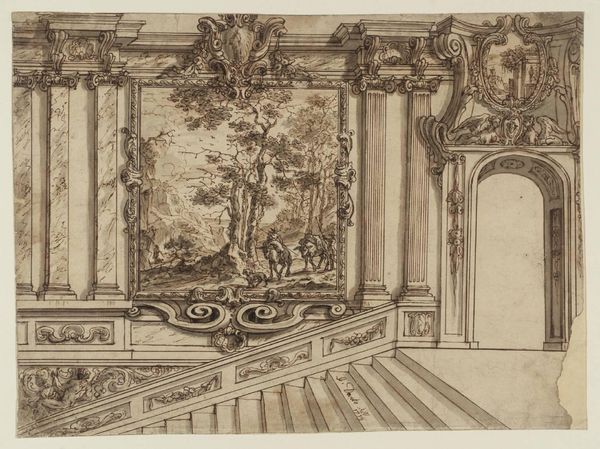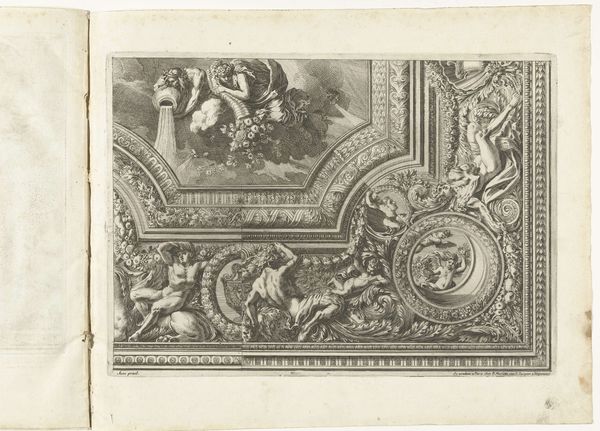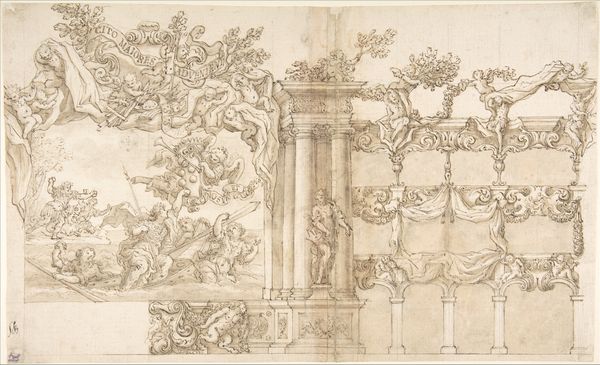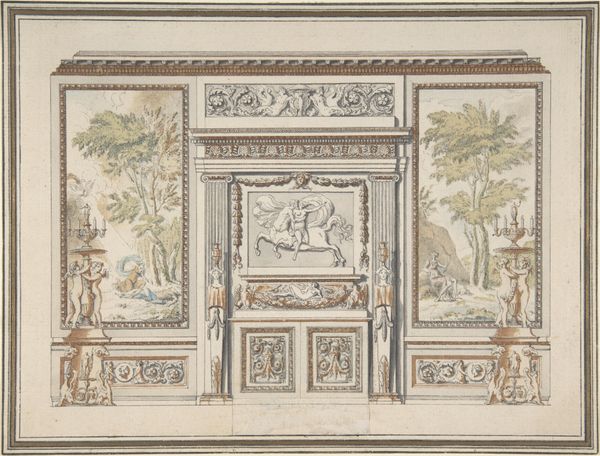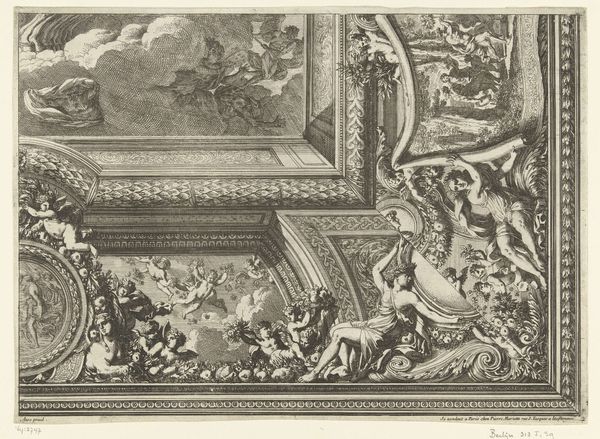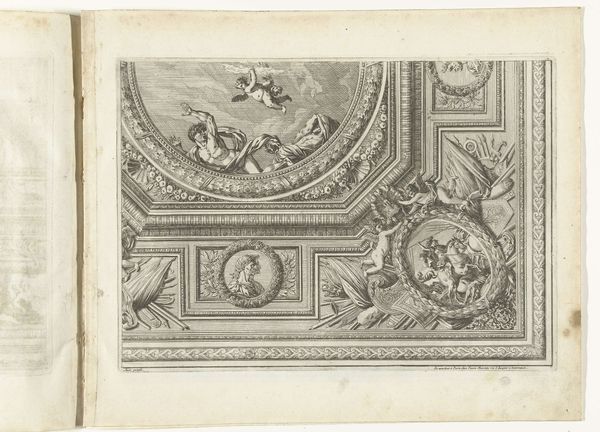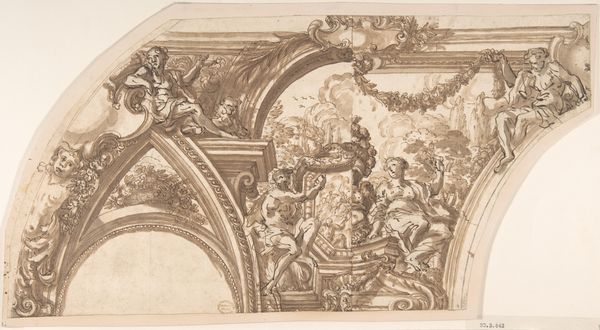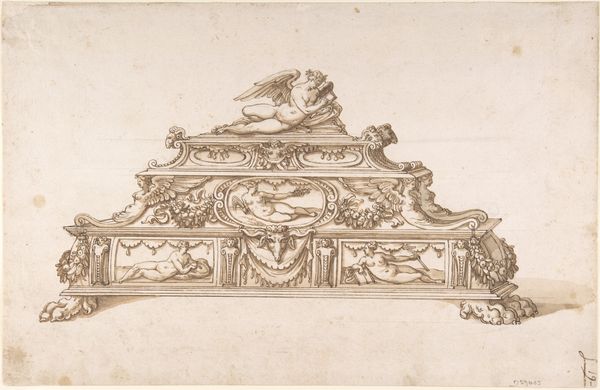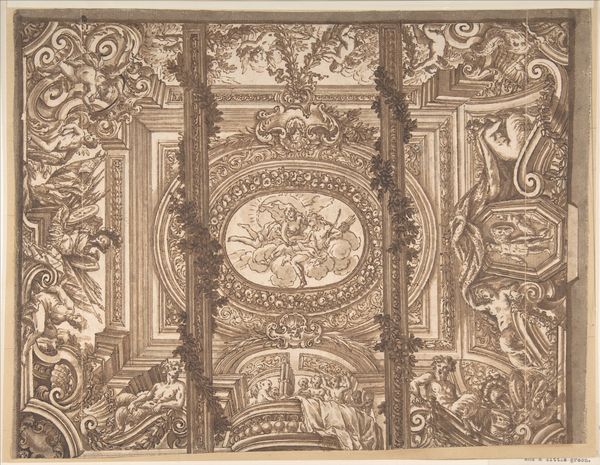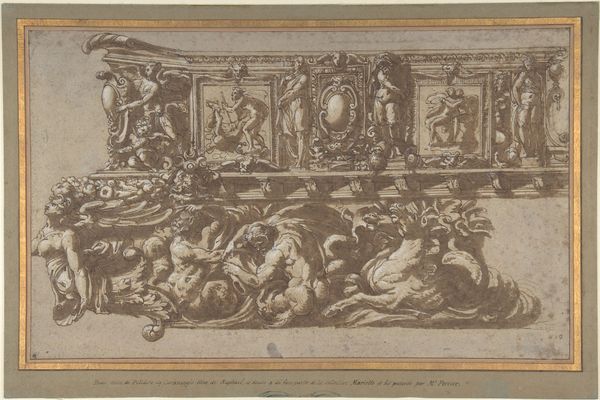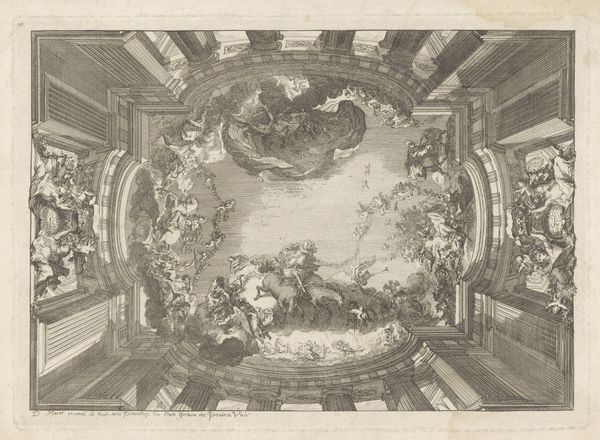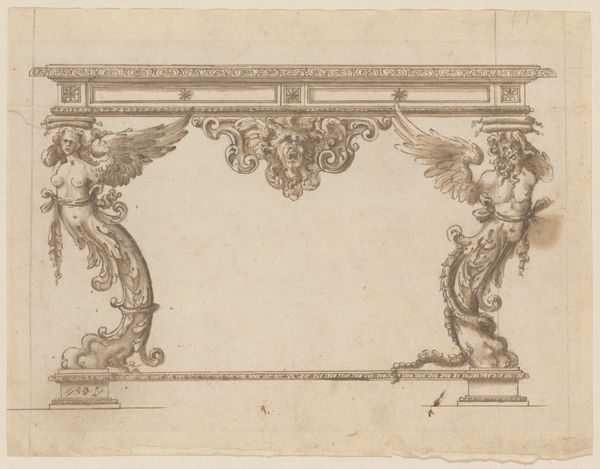
Dimensions: support: 311 x 391 mm frame: 547 x 619 x 25 mm
Copyright: CC-BY-NC-ND 4.0 DEED, Photo: Tate
Editor: Sir James Thornhill’s "A Ceiling and Wall Decoration" is a whirlwind of figures sketched in brown ink. The dynamism is captivating! What do you see in this piece? Curator: This work speaks to the enduring power of classical mythology. Consider how Thornhill uses these figures - Neptune, gods in the heavens - to evoke ideas of power, divinity, and even national identity within the context of the British Baroque. Editor: National identity? How so? Curator: By associating Britain with the grandeur of classical civilizations, Thornhill subtly elevates its status. Think of how ceiling paintings in grand houses shaped perceptions. Editor: So, it's not just decoration; it's a statement. Curator: Precisely. Symbols can carry profound cultural weight, shaping how we see ourselves and our place in history. Editor: I never thought about it that way.
Comments
tate 8 months ago
⋮
http://www.tate.org.uk/art/artworks/thornhill-a-ceiling-and-wall-decoration-t08143
Join the conversation
Join millions of artists and users on Artera today and experience the ultimate creative platform.
tate 8 months ago
⋮
Thornhill was the most important native-born baroque decorative painter of the early eighteenth century, competing in a field which had been dominated previously by foreign artists trained in the Continental tradition. A large number of sketches and preliminary studies for his schemes survive, such as this one. It is not known for which location it was intended, although in the past it has been linked to Thornhill's designs for Canons, Middlesex, the imposing new mansion built by James Brydges, 1st Duke of Chandos. It shows a grand staircase richly painted with mythological scenes - the Birth of Venus in the centre, Neptune in his chariot to the left and an assembly of the gods on the ceiling above. Gallery label, August 2004
